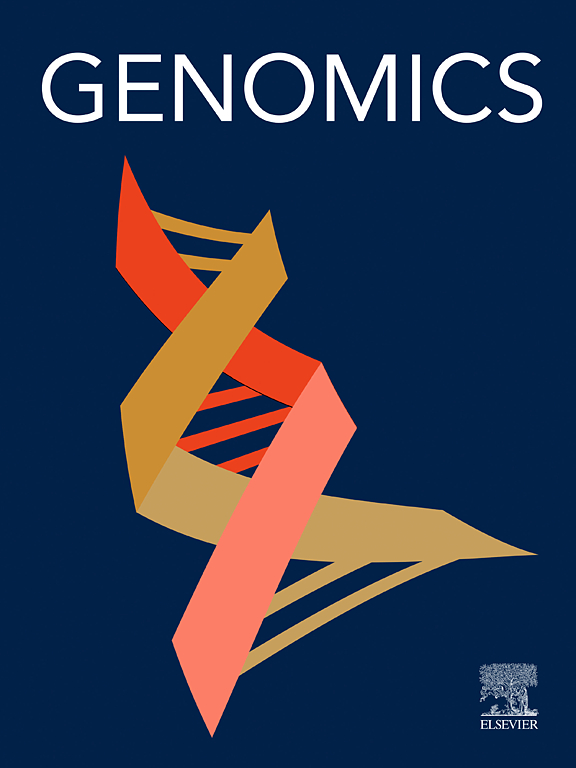Transcriptome and lipid metabolome of the subcutaneous fat of Tibetan sheep: A comprehensive analysis of the reduction in fat deposition upon resveratrol and β-hydroxy-β-methyl butyric acid supplementation
IF 3
2区 生物学
Q2 BIOTECHNOLOGY & APPLIED MICROBIOLOGY
引用次数: 0
Abstract
Previous research studies confirmed that resveratrol (RES) and β-hydroxy-β-methyl butyric acid (HMB) regulated the glucolipid metabolism. However, the mechanism underlying of RES and HMB on subcutaneous fat remains unclear in ruminant. This study investigated the effects of dietary RES and HMB supplementation on immune, oxidative, and morphological changes in subcutaneous fat of Tibetan sheep using transcriptomics and metabolomics analysis. One hundred and twenty male Tibetan lambs of similar initial weight (15.5 ± 0.14 kg) were randomly divided into four groups of 30 lambs each: 1) H group (basal diet without RES or HMB); 2) H-RES group (1.5 g/day RES); 3) H-HMB group (1250 mg/day HMB); and 4) H-RES-HMB group (1.5 g/day RES and 1250 mg/day HMB). The study included a pre-test period of 10 days and a formal experimental period of 90 days. The results showed that, the supplementation of RES and HMB in combination reduced the backfat thickness and adipocyte diameter (P < 0.05). Notably, dietary RES and HMB significantly influenced the composition of fatty acid in subcutaneous fat, including increased monounsaturated fatty acid (MUFA), such as C16:1 N7, C18:1 N9, C20:1 N9, C22:1 N9, C24:1 N9, C24:1 N, and decreased saturated fatty acid (SFA), such as C8:0, C10:0, C11:0, C24:0. The H-RES-HMB group enriched in the lipid-related signaling pathways, including “linoleic acid”, “arachidonic acid”, “tyrosine” and “retinol”. The transcriptome and metabolome indicated ten key genes including PLA2G5, PLA2G2D, PTGES, TBXAS1, ALOX5, MAOA, TYR, UGT1A4, RDH5, and DHRS9) and five metabolites including PC(33:4), LPC(22:0), LPC(15:0), LPC(16:1), PC(42:8) were identified as key biomarkers. In conclusion, dietary RES and HMB supplementation regulated the lipid metabolism by modulating gene transcription and metabolism in Tibetan sheep.
藏羊皮下脂肪的转录组和脂质代谢组:补充白藜芦醇和β-羟基-β-甲基丁酸减少脂肪沉积的综合分析
前期研究证实白藜芦醇(resveratrol, RES)和β-羟基-β-甲基丁酸(HMB)调节糖脂代谢。然而,RES和HMB对反刍动物皮下脂肪的作用机制尚不清楚。本研究通过转录组学和代谢组学分析,研究了饲粮中添加RES和HMB对藏羊皮下脂肪免疫、氧化和形态变化的影响。选取初始体重(15.5 ± 0.14 kg)相近的公藏羔羊120只,随机分为4组,每组30只:1)H组(基础饲粮中不添加RES和HMB);2) H-RES组(1.5 g/day RES);3) H-HMB组(1250 mg/day HMB);4) H-RES-HMB组(1.5 g/d RES和1250 mg/d HMB)。研究包括10 天的预试期和90 天的正式试验期。结果表明,RES和HMB联合添加可降低大鼠背脂厚度和脂肪细胞直径(P
本文章由计算机程序翻译,如有差异,请以英文原文为准。
求助全文
约1分钟内获得全文
求助全文
来源期刊

Genomics
生物-生物工程与应用微生物
CiteScore
9.60
自引率
2.30%
发文量
260
审稿时长
60 days
期刊介绍:
Genomics is a forum for describing the development of genome-scale technologies and their application to all areas of biological investigation.
As a journal that has evolved with the field that carries its name, Genomics focuses on the development and application of cutting-edge methods, addressing fundamental questions with potential interest to a wide audience. Our aim is to publish the highest quality research and to provide authors with rapid, fair and accurate review and publication of manuscripts falling within our scope.
 求助内容:
求助内容: 应助结果提醒方式:
应助结果提醒方式:


